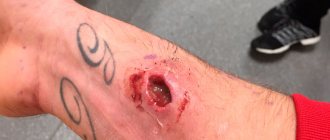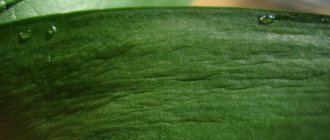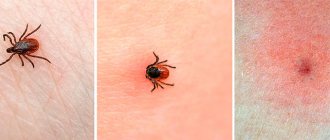How to detect moths on a fur coat?
The fur moth is a clay-colored insect with a hairy body. Such a creature does not live long, but in a short time, it manages to lay multiple numbers of larvae. It is these “invisible” larvae that cause widespread damage to your fur coat. There are some signs indicating that pests have settled in a fur product.
It’s worth checking your fur coat if:
- You notice a flying moth in the house. Before you kill, check your kitchen cabinets to see if they are kitchen moths. Then reconsider fur products.
- New folds and clumps have appeared on your fur coat. She began to look unkempt.
- At the bottom of the cabinet they found lint, like something left from a hairdresser. These are traces of the fur being “cut” by the larvae.
- You have discovered “bare” islands or tunnels without fur - this is a red light. It's time to act.
Above is a photo of a fur coat eaten by moths.
The main enemy is moth larvae
Not every housewife knows what to do if there is a special moth in a fur coat. Some panic, others throw away the damaged item. But they do not take into account that the larvae of this pest remain in the closet. If they are not destroyed, the caterpillars will move to other things made of wool or fur. If the fur coat has been eaten by larvae, then you should find their nest. Finding caterpillars is not difficult if you carefully examine fur products. To settle comfortably, they prepare cocoons or silk cases. Each molt is accompanied by a replacement of the cover. By this feature it is easy to distinguish moths in fur coats from skin beetles.
What to do if a moth has eaten a mink coat?
Many women, seeing an unpleasant “surprise” for themselves, panic, get upset, mentally throw away the damaged product and make plans to beg their husband for a new mink coat. But if you love a product very much, you don’t want to give it up. You can avoid further eating of your fur coat by moths. We offer some tips for eliminating unwanted guests.
- To begin, take your fur garment outside. Shake it well. Such manipulations will save you from existing insects. In addition to mechanical impact, temperature shock also helps. These individuals are afraid of high and low temperatures. If the moth appears in the summer, the heat and sunlight will kill the existing larvae. It also fights moths and frost in winter.
- A good addition to the previous actions would be to comb out the eaters. But since it is difficult to destroy the larvae with a regular accessory, use a fine-toothed comb. But you need to do this exclusively on something, so that you can easily destroy the pests later.
- In difficult cases, insecticidal agents are used. Today, there are various chemicals that will help cope if moths start eating fur coats. An aerosol with an insecticidal spray is used to treat the fur coat and the closet where it was located. Afterwards, the fur product is wrapped in a cover. Clothes should be sprayed periodically every 2-3 weeks.
Also read: Causes of potato moth
To prevent the appearance of moths in your wardrobe, you need to carry out prevention. Check out the video that will help you carry out all the activities correctly.
It's easier to prevent than to destroy
When purchasing a fur product, you need to ask the seller how to protect the fur coat from larvae. Sellers who take their responsibilities responsibly will provide a lot of useful information. Excess moisture affects the condition of the fur. That is why sellers do not advise wearing such items of clothing in wet weather.
In order to preserve the product, which was purchased at the Auchan store, it is carefully shaken off. This allows you to get rid of excess moisture. The item of clothing is hung on hangers selected for size and strength. To straighten all the hairs, use special brushes. After all, parasites grow in moist lumps.
In summer, mink coats and moths come into contact much more often. Therefore, preparations for the summer should be more thorough. If there are stains on the surface, then the owners visit dry cleaning. You should not clean and get rid of contaminants on your own. During the inspection, check the condition of the fasteners or buttons, as well as the lining.
For storage, use places where the temperature level is 0-19 degrees, and the humidity level does not exceed 45-50 degrees. Before putting a fur garment into a closet or other place, remove accessories and other elements from it. Pockets are filled with bags of aromatic good herbs and plants.
For additional protection, use bags or a moth cover. In this case, aerosol for moth coats is not used, since covers made of natural material are pre-impregnated with repellent compounds.
People who sew fur products recommend taking certain preventive measures:
- All rooms and additional rooms are ventilated to optimize humidity levels and temperature conditions.
- The inside of cabinets and chests of drawers is treated with natural repellents and vinegar solutions. Before this, all items of clothing are removed. You can return them to their place after all the parts have thoroughly dried.
- You should inspect not only fur products, but also other items of clothing. After all, the larvae are located in the folds and bends of other objects.
- In cabinets and chests of drawers there are bags with spicy and aromatic herbs. Their aroma repels insects and pests, prevents their reproduction and spread.
- All fur products are dried periodically. The use of household heating appliances and dryers is prohibited, since elevated temperatures have a detrimental effect on the condition of clothing items.
- The cabinets are equipped with standard and gel sections filled with special substances and repellents. They are not intended to repel pests. To destroy larvae and eggs, special chemical components and agents will be required.
Owners of expensive furs should carefully study the recommendations on how to store a mink coat from moths. So, it should be remembered that moisture has an adverse effect on the condition of the fur. If you had to get caught in rain or sleet while wearing a fur coat, the first thing you do when you get home is drying it. Moreover, it must be gentle - no hair dryer, gas oven, heater. This is done correctly like this:
- the fur coat is shaken;
- hung on hangers of the appropriate size;
- combed with a special fur brush;
- dry in a quiet position.
You need to hang the fur item in a cool, dark place. She should not be wearing any jewelry or accessories. You should put special bags with a repellent scent (citrus, wormwood, geranium) or tablets in your pockets and on shelves/corners of the closet. Periodically, the furs must be removed from the shelter and ventilated.
Moth balls are placed in pockets and in the closet to prevent the appearance of insects
For long-term storage, moth coat covers are used. At the same time, a polyethylene cover cannot be used for such an expensive natural product. Fur coat will be “uncomfortable” and she will “suffocate” and lose her presentability. The cover must be either cotton or linen
We also want to pay attention to the color of the cover - low-quality specimens are painted, which means there is a risk of damage to the fur. Once every 2 months, the fur coat should be hung out in the open air, and the preventive anti-moth bags should be changed with fresh ones.
In principle, that's all the recommendations. Stick to them and your favorite fur coat will serve for more than one season, pleasing the eye and warming you with warmth.
Source
Prevention and rules for storing fur coats
Before you send your furry beauty into “summer hibernation,” you need to carefully prepare. This will prevent the appearance of pests.
To do this, it is recommended to carry out the following activities:
- Be sure to clean the product after the end of the season. Existing traces of wear are removed by dry cleaning.
- Fix any problems with the fittings. Carry out cosmetic repairs if necessary.
- Take care of a protective anti-moth cover, which will prevent parasites from getting to the treat. Don't skimp on this accessory. You can purchase covers soaked in essential oils, which moths really don’t like.
- To prevent pests from touching the fur product, create favorable storage conditions, ventilate the product from time to time, and let it breathe.
Preventive measures
- At the end of the season of wearing winter clothes, clean them with a brush; it also doesn’t hurt to go over them with a vacuum cleaner. Be sure to remove everything from your pockets, ventilate, dry and shake;
- Clean clothes should be stored in the closet; this will be the key to the absence of moth infestations. Before storing clothes, place dry citrus peels on the shelves; moths cannot tolerate such odors and will not settle there;
- Cabinets must be tightly closed so that insects cannot penetrate into any cracks and ruin outer clothing;
- Sharp temperature effects are an effective method against moth colonies. Ironing will kill moth larvae, or storing at a low freezer temperature will protect the fur item from invasion by clothing pests.
To avoid having to fight moth larvae later and to prevent moths from eating a mink coat, follow the basic rules for handling fur products.
When the season of wearing winter clothes is over, take the product to the dry cleaner, they will professionally remove traces of particles of human skin and sweat. A specially selected cover for a fur coat will protect the fur from insects. At least once a month, take it out of the closet, look through it and air it in the fresh air for at least a day. So that you don’t have to think about how to get moths out of your fur coat and not complicate your life.
If a mink coat is eaten by a moth, this can seriously hit the budget of the average family, because it is not customary to buy such expensive things every season. Therefore, you should take care in advance about how to treat a fur coat against moths so that such sad stories do not happen. The above-mentioned measures to prevent and combat moths are described in detail in the article. Follow simple rules and take care of your favorite things.
Remedies against fur moths
In addition to proper storage, use preventive measures. In this case, you can resort to different methods.
Insecticidal method
To prevent moths, not only scented covers are used, but also various tablets, plates, hanging fillers, and stickers. These items are soaked in essential oils, such as citrus, mint, lavender, pine and other repellent aromas. This is not harmful for us, but for insects it is a disastrous remedy. All kinds of aerosols will also help protect your fur item from parasites.
Folk way to get rid of moths
The most common remedy for moths was and remains tobacco. Place it at the bottom of the closet or directly in the fur coat. In addition, bags of lavender, mint, rosemary or geranium are excellent at repelling these insects. You can make such products yourself. Citrus peels are also useful as a preventive measure. You can also use essential oils by soaking a cotton pad in them. Well, how can you do without your favorite persistent perfume? To prevent moths from eating your fur coat, apply a scent to it and put a cover or polyethylene on top.
Also read: Food moth: causes of occurrence and how to get rid
It doesn't matter which option you choose, the main thing is the result.
Ways to fight moths
The moth is quite neat and selective, so it eats the fur coat gradually and cyclically. Having finished with one area, she moves to another. That is why at the first signs of infection you need to immediately move on to the fight. There are several ways to remove moths.
What are the best anti-moth products?
ChemicalFolk
Application of insecticidal preparations
Ideally, to store a mink coat or other fur product, you need to use special covers that are impregnated with repellents. They are sealed and designed specifically for protection.
Insecticidal preparations can use special aerosols or sprays. If there is a suspicion that the moth has already moved to other areas, then you can spray an aerosol into the cabinet and close it. It is better to repeat the procedures after 3 weeks.
If you want to protect your fur coat directly, you can spray it with an aerosol and then place a special cover. Of the aerosols, the most popular and effective are Raptor against moths, Clean House or Antimol.
tablets and plates, which are simply placed in the cabinet, deal with moths quickly and effectively There are drugs in gels that are placed in special containers.
There are special liquid products that are used to treat fur products. This is done at the beginning of the winter season, when outer clothing is cleaned. After processing, the products are placed in a case.
Another means is fumigators. Although they do not act as quickly and effectively as previous insecticides, because they only remove adult moths, they will help very well in the fight against small numbers of moths and for preventive purposes.
The box shows effective, quick-acting chemicals.
| Fumigator | Usually this is a device with a special liquid that helps destroy moths. It works very simply: the device is plugged into a socket, the smell spreads throughout the apartment, and when the poison is inhaled, the moth dies. Of course, a person practically does not smell it, and it is not poisonous to people. |
| Traps | People use traps to clear their rooms of insects. This product is not harmful to people or animals. To work, open the box with the trap and place it in the place where the moth appeared. The attractive aroma will attract insects. When they fly closer and land on the box, the moth will stick to the edge of the trap. You will be able to see the result within a few hours. It will take 1-1.5 weeks to completely get rid of insects. |
| Aerosols | This remedy is effective against all types. Inside the can there is a deadly poisonous liquid. Inhaling the aroma of the aerosol, the insect dies within a few seconds. When using an aerosol, you need to follow several recommendations: remove the child and pets from the next room; put on a mask and gloves before working with the product; do not use the aerosol on food; After extermination, carry out wet cleaning. |
| Sprays | This liquid is needed to repel insects. She does not kill them, but only repels them with an unpleasant odor. The spray is applied to clothing and furniture to protect items from damage. Directions for use should be written on the back of the bottle. |
| Pills | Tablets are created from essential oils, which tend to repel pests. The product may have not only an unpleasant odor, but also an attractive aroma, but the smell still repels moths. Directions for use are usually written on the package, but if you threw away the box or didn’t have time to read it, just put the tablets at the edges of the closet or inside your clothes. Change every 6 months. |
| Plates | This substance, poisonous to insects, is installed in closets or clothing. The deadly smell destroys moths and larvae. There are no traces left on clothes and things after use. If you place the plates in a cabinet, attach them to the top of the cabinet, as the smell will spread from top to bottom. |
Mechanical protection
Moths do not like temperature changes.
Mechanical protection is a physical impact on any deposits of things. This will require some effort, but this method is quite effective. You need to take things and shake them up. Due to the periodic discomfort caused, the moth will not be able to eat away at the fur items and will have to look for a new place to live. However, you should not think that moths will not transfer from a fur coat to a woolen sweater, so you need to carefully sort through even all the old deposits.
Moth larvae do not like temperature changes and too changeable living conditions. So, if damaged items are taken out into severe frost in winter, the larvae will die very quickly. Also in summer, if exposed to too high a temperature, all larvae may die.
Folk remedies
Of course, if the housewife has already seen a moth eating a fur coat, then ordinary folk remedies are most likely already powerless. They are used mostly when the extent of the damage is not yet noticeable or as a preventive measure.
Essential oils of lavender, geranium or chamomile can repel adult moths with their scent. It is recommended to collect dried flowers, place them in a small fabric bag and hang them in the closet.
Citrus zest can also be sliced and placed on a napkin on a shelf. You can use oranges, grapefruit, tangerine or lemon. When it dries, the bundle can be replaced with a fresh one.
Laundry soap is an excellent way to remove moths. Using it, you need to periodically wash all the shelves. You can also put a block between things.
This article provides 20 effective methods for ridding your home of moths.
The second life of a moth-damaged fur coat
A moth has chewed on your fur coat, are you in despair, don’t know what to do with it? There is a way out of any situation, sometimes very simple, and sometimes expensive.
Before you get upset, evaluate the scale of your losses:
- If you notice minor stains on the collar, it may be enough to simply cover the flaw with a scarf or shawl.
- A chest island will hide a brooch of a suitable size, with a distracting effect.
- If the larva has damaged inconspicuous places, you can simply shade them with paint, a marker, shoe polish, just choose the tone.
- If you need to get rid of the affected areas on your fur coat, perform a small “operation”. To do this, cut out the infected areas and try to sew the incision. But first, make sure you can do it without being noticed.
- For severely damaged clothing, you may have to get creative. For example, make leather inserts, shorten the product, change the length of the sleeves, and so on. It is quite possible to recut the fur coat.
- What remains, on the one hand, is the easiest, and on the other hand, the most expensive option, when nothing can be done - buy a new fur item from a mouton or mink.
We showed a photo of what a fur coat looks like when eaten by moths, and told us how to prevent such a nuisance. Don’t let your favorite, perhaps your only, fur coat fall into disrepair. Consider the recommendations that will help you avoid the appearance and proliferation of moths in your wardrobe.
The first signs of the presence of moths
How can you tell if there are moths in your fur coat? Sometimes it is not even immediately possible to understand that a moth is eating a fur coat. And all because the parasite eats its favorite treat gradually. He eats, moving around the thing and leaving minor bald spots on it. It is this moment that signals that there is a pest in the wardrobe. If moths start eating your fur coat, you will most likely notice the following unpleasant aspects:
- the fur becomes sloppy, loses its presentability and aesthetic appearance;
- in the case in which you store the mink product, hairs that appear to have been cut are found;
- areas that uninvited guests have chewed and that have been particularly damaged acquire unnatural folds.
Inquire in advance what a voracious moth looks like when it eats a fur coat. After all, the sooner you discover the problem, the greater your chances of saving your favorite thing and ensuring the safety of your fur coat from the moths that eat them.
How to keep a fur coat from moths? You can protect your clothes using effective preventive measures. First of all, this means proper storage of things. The use of fumigators, as well as special aerosols, shows good effectiveness. Spray them from time to time so that the insecticidal preparation gets on both the fur products themselves and the inner walls of the closet. Knowing how to protect clothes from moths, you can once and for all put an end to concerns about your favorite items of clothing.
The first thing you should pay attention to is how you can protect your home textiles from the mink pest. If a voracious insect starts in a wardrobe, it most often ends up on a fur coat made from completely different things. However, she will start eating from her, and first of all, because fur is her favorite treat.
You can protect a mink garment if you allocate a separate closet for fur items. Separate these items from other items of clothing - and problems with pests should no longer arise. At the same time, place clothes in the closet exclusively in a clean, dry form. Additional protective measures will not hurt: place bags of citrus peels, geraniums or wormwood in the corners of the wardrobe. Their smell will repel parasites and keep them at a distance from your favorite thing.
What to do if there are moths in your fur coat? Sometimes, no matter what measures you take, fur products can still be attacked by these voracious insects. In this case, you cannot do without professional insecticides. If a fur coat has been eaten by moths, it is not too late to protect other items of clothing, so get rid of parasites quickly and radically.
Among the most popular compositions used against pests, it is worth highlighting aerosols: Raptor, Mosquitall. They do not have a pungent odor, and you won’t have to worry about keeping things safe from pests.
Mechanical protection
If treatment with sprays may not seem very gentle to some housewives in relation to fur items, you can resort to much more ancient methods - mechanical cleaning. In the summer, it is recommended to shake out and ventilate the mink item. This is perhaps the most cost-effective way to preserve textiles from the harmful effects of insects. However, there are several disadvantages:
- physically, shaking out fur products is not so easy;
- You still won’t be able to rid your clothes of moth larvae this way.
Folk remedies
You can remove moths from a fur coat using insecticides, but not by using folk methods alone. As a preventive measure, lavender, geranium, and citrus fruits should be placed in the wardrobe. As a rule, for this purpose, small fabric bags are taken (you can sew them yourself), into which sprigs of lavender, geranium or orange peels are placed.
• The fur is crumpled, looks dull and untidy; • There are several hairs of wool on the floor of the wardrobe; • Crumpled fur on the smooth surfaces of the fur coat; • A slightly stagnant smell from the product; • The fibers fall out when ironed by hand; • Small bald patches and stains are visible in the bends.
If you detect at least one such symptom, urgently free the fur from these “inhabitants”, since in the near future you risk being left without warm protection for the winter.
Body moth: signs and differences
Clothes, house or furniture moths are a domestic pest from the order Lepidoptera. It is also called clothing, fur coat, carpet. Insects belong to a large family of true moths, differing in size, distribution area and feeding habits.
The area of interest of the clothes moth is clear from the name. Insects actively destroy home textiles: clothing, furniture upholstery, curtains, carpets, as well as products made from natural fur. The main damage is caused by caterpillars; flying individuals are not dangerous.
At home, there are different types of moths: clothes moths, fur moths, food moths and others (read more about the fight against food pests). Butterflies differ slightly in color and size, caterpillars are practically indistinguishable from each other. Adult clothes moths have a rather inexpressive appearance.
What does a moth look like that eats a fur coat? The small insect is colored beige-silver, its narrow wings are abundantly covered with fringe, and whitish fibers are visible on the head.
The moth practically does not fly around the room; it can be detected by accidentally disturbing it in its habitat.
Adult females prefer to hide in folds of fabric and piles of things in preparation for breeding. In secluded corners, moths lay eggs, from which caterpillars hatch, causing major damage to textiles. Fast-growing caterpillars have a developed gnawing mouthpart, which allows them to quickly wear away textile fibers.
Under natural conditions, this type of moth feeds on animal hair, plant fibers, and bird feathers. In apartments, the diet of caterpillars is much richer. Their prey is any textiles, fur products, various fabric pads in furniture, and animal bristles.
Moths feed not only on natural but also synthetic products. Often it damages only the inner layer of tissue, leaving the outer layer intact. Defects can only be detected during wear; in damaged areas, the fabric quickly spreads, forming holes.











